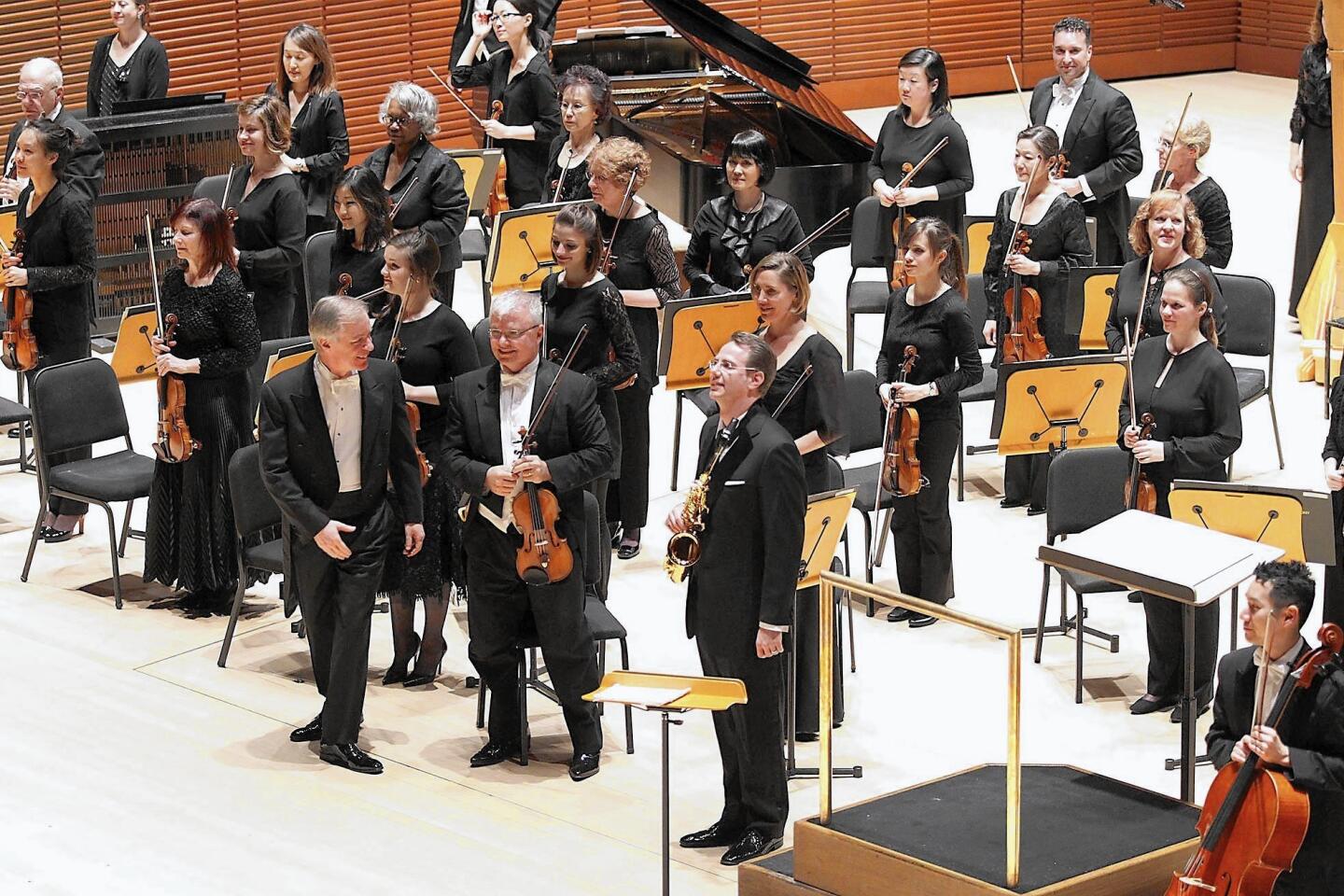St. Louis Symphony lives up to its reputation
- Share via
A cultural event of no small musical significance took place at Soka University’s venerable Performing Arts Center on Wednesday night.
It’s a shame not enough people were there to witness it.
The St. Louis Symphony, one of the nation’s best and oldest orchestras, stopped by the Aliso Viejo university’s acoustically brilliant hall for a seemingly quick concert. Only two pieces were on the program: John Adams’ Saxophone Concerto and Mahler’s Fifth Symphony. It was part of a short California tour, the orchestra’s third since 2010, that also includes trips to Palm Desert, Berkeley and Los Angeles.
Unfortunately for Soka, the house was only about two-thirds full — not nearly enough ears to absorb the richness of the 136-year-old ensemble led by David Robertson, its music director since 2005, and its traveling virtuoso saxophonist, Timothy McAllister.
McAllister started the evening with Adams’ concerto. He premiered the piece in 2013 and gave a steadily energetic, swimmingly sweeping performance of the modern work. Soka’s hall is a particular treat for those in the front row, which is at ground level with the performers, allowing these guests to get thoroughly close to the action onstage.
It’s also a treat to hear nearly everything that happens inside the room, a boon for finely trained ears but unfortunate for performers who may misstep. Unlike other, more forgiving halls that swallow up tiny mistakes, Soka’s exposes them.
As such, the only noticeable miscalculation, in my estimation, in the Adams’ piece was the orchestra’s consistently overpowering of McAllister’s admirable technique. This probably explains why the vibrant hall hosts few large ensembles each year, preferring to use its space for smaller groups.
After intermission, St. Louis finally got its chance to dominate the stage, and it did so for the entire second half with Mahler’s famous Fifth. Indeed, the symphony flexed from the initial downbeat, with brilliant solos throughout the first movement from Karin Bliznik, the orchestra’s principal trumpet.
Fortunately for the audience, St. Louis continued to improve its playing throughout the evening, and by the time the Mahler work ended about an hour later — having given the players enough to time to adjust to, for them, a new acoustic territory and unfamiliar concert hall — the group sounded like a different, more finely tuned orchestra altogether.
The Scherzo moved along at a wonderfully crisp and precise pace, racing forward with evermore brilliance thanks to St. Louis’ principal French hornist, Roger Kaza. The Adagietto, the symphony’s most famous sequence, was a fine silk with all the mystique and majesty that Mahler intended.
More to Read
The biggest entertainment stories
Get our big stories about Hollywood, film, television, music, arts, culture and more right in your inbox as soon as they publish.
You may occasionally receive promotional content from the Los Angeles Times.












